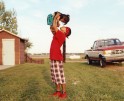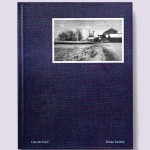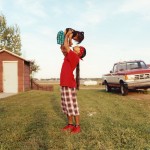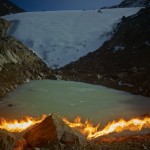Re-Discovering Native America: Stories in Motion with The Red Road Project

©The Red Road Project, Julian Elijah, Julian of the Standing Rock Sioux Tribe in North Dakota, is a single father who works at the local casino. Shortly after the birth of his son, Elijah, the mother abandoned them both, leaving Julian to be the sole caregiver. Both Julian and his son’s mother struggled with alcohol addiction but Julian made the choice to sober up and be a positive influence to his son. Native Americans were introduced to alcohol during colonization in the 19th century. Today, Native Americans have the highest rate of alcohol disorders of any racial group in the county.
Bedford Gallery has recently opened its latest exhibition, Re-Discovering Native America: Stories in Motion with The Red Road Project, a photo-docuseries which highlights and celebrates inspiring stories of present-day NativeAmerican individuals and communities by providing a platform for them to tell their stories of the past, present, and future in their own voices and words — which historically has not been the case. Including nearly 100 photographs and a selection of 3D works by acclaimed Native American artists, this exhibition explores contemporary narratives of Indigenous communities from across the United States. Re-Discovering Native America: Stories in Motion with The Red Road Project will be on view from April 13 through June 23, 2024, from 12:00pm-5:00pm, Wednesday through Sunday at Bedford Gallery inside the Lesher Center for the Arts.
Since founding the Red Road Project in 2013, multicultural friend-and-artist duo Danielle SeeWalker (Hunkpapa and Oglala Lakota) and Carlotta Cardana, who was born and raised in Northern Italy, have been committed to documenting the stories and teachings of contemporary Native people and communities who are enacting positive change and celebrating their cultural heritage despite the long, complicated historical trauma faced by Indigenous communities in the United States. Over the past eleven years, the artists have collected myriad stories and photographs in a wide range of topics including, Language, Land Connection, Reservation Life, Urban Natives, Two Worlds, Activism, and 7th Generation. In addition, the duo has also undertaken several in depth community projects including Isle de Jean Charles, Winnemem Wintu, and Our Mother is Crying.

©The Red Road Project, Sage in the Colorado River, Sage of the Hualapai Tribe, earned the title of 1st attendant in the 2012 Miss Native American USA pageant. From that point forward, she has used her platform to encourage Native youth to travel off the reservation to explore opportunities and gain experience to bring back to their communities. Sage continues to speak to youth focusing on four fundamental principles: traditionalism, spirituality, contemporary issues and education. Sage stands at the base of the Grand Canyon in waters that are sacred to her people. She wears a hand-made dress and red circular make-up on her cheeks, both traditional to her Tribe.
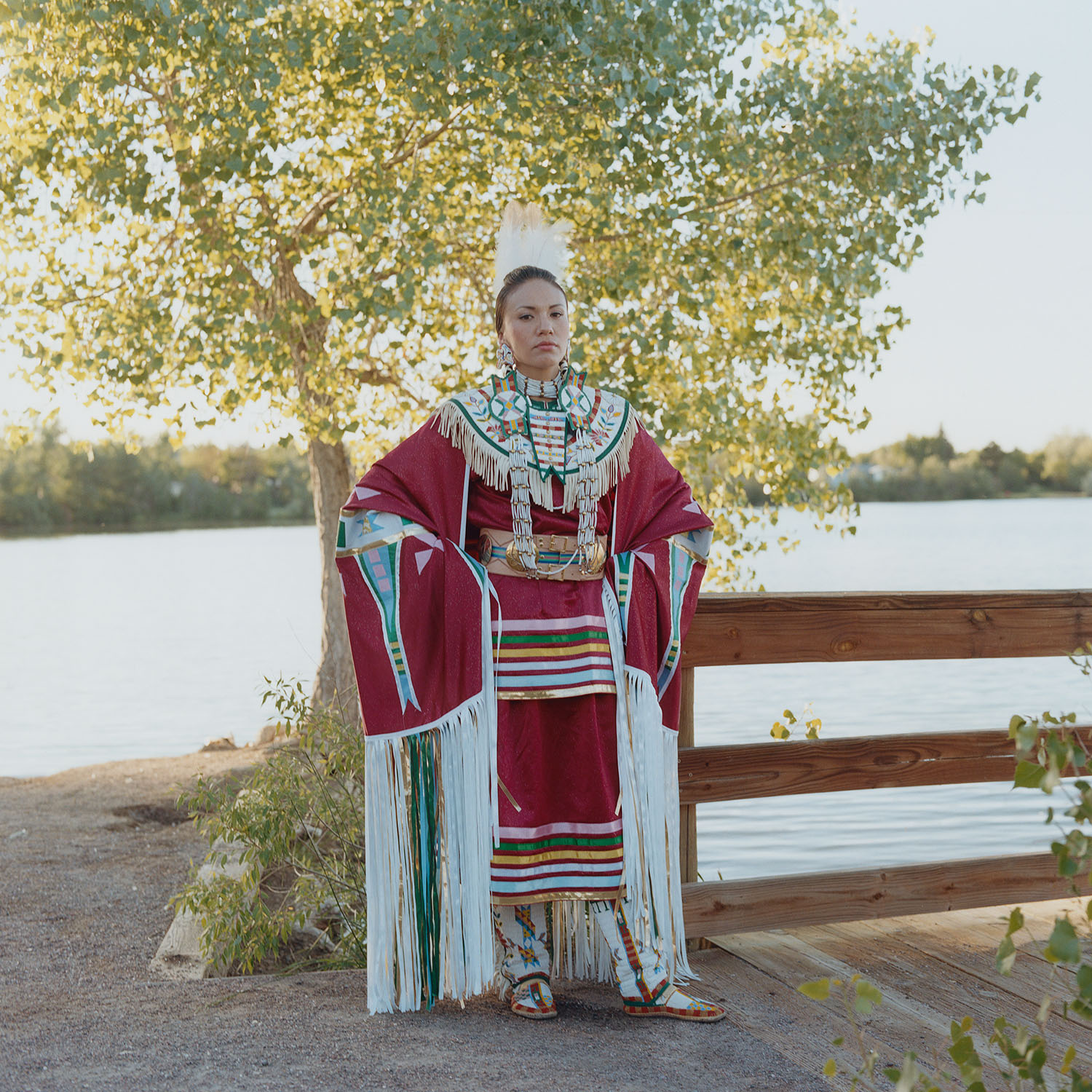
©The Red River Project, Tanski, Tanksi grew up off the Indian reservation in Denver, Colorado. She went to public school and was typically the only Native American in her classes. She reflects, “Because I was the only Indian kid in school, I was always asked by the teachers what my opinion was when we got to the Indian section of history. It wasn’t discrimination, but it was always awkward”. During high school, she started to embrace her differences from the mainstream population. She started to do cultural dance performances for her classmates so that they could understand a piece of her identity. Even though she grew up off-reservation and in an urban environment, Tanksi has been able to balance her traditional heritage with the modern society thanks to her grandmother and mother who made sure she stayed grounded by knowing the Lakota language, ceremonies and traditional ways. “I’m proud that we, as Native Americans, can maintain our traditional lifestyle whether we live in the city or on the reservation and that we can be educated and be professionals too”. In her portrait, she wears hand beaded regalia that she made herself. The colors and patterns represent the Lakota and Dakota tribes she comes from.
For this exhibition, Bedford Gallery curated nearly 100 photographs and stories collected from2013 to 2024 by The Red Road Project that highlight the beauty and resilience of Native American people and cultures throughout the United States and demonstrate Cardana and SeeWalker’s intent to “redirect the narrative to an accurate and insightful representation of contemporary Native America.” The title of the exhibition also aims to reclaim language and stories destroyed by non-Native narratives that fuel negative stereotypes and microaggressions. The featured images are a mix of landscape and portrait photographs, often of community
activists and leaders who “walk the red road,” an expression found in many Native communities meaning “they are living life with purpose while on a path to positive change.” As a continuation of The Red Road Project’s work, a new set of photographs and stories Cardana and SeeWalker collected during a two-week Bay Area residency in February 2024 will also be presented. The works tell the unique stories of Indigenous people based in Northern California with an emphasis on the Bay Area. The residency was sponsored by Bedford Gallery’s non-profit partner Diablo Regional Arts Association.

©The Red Road Project, Danielle Ta’Sheena in her Bedroom, Danielle Ta’Sheena Finn (Hunkpapa Lakota) wears traditional regalia made by her and her mother and sits in her childhood bedroom in Bismarck, North Dakota. Today, Danielle works as a Judge for the Cheyenne River Sioux Tribe. During law school, she participated in several Native American pageants as a way to earn scholarships for college, but also to represent herself and other young women from her tribe. The ribbons in the background reflect some of her winning titles.
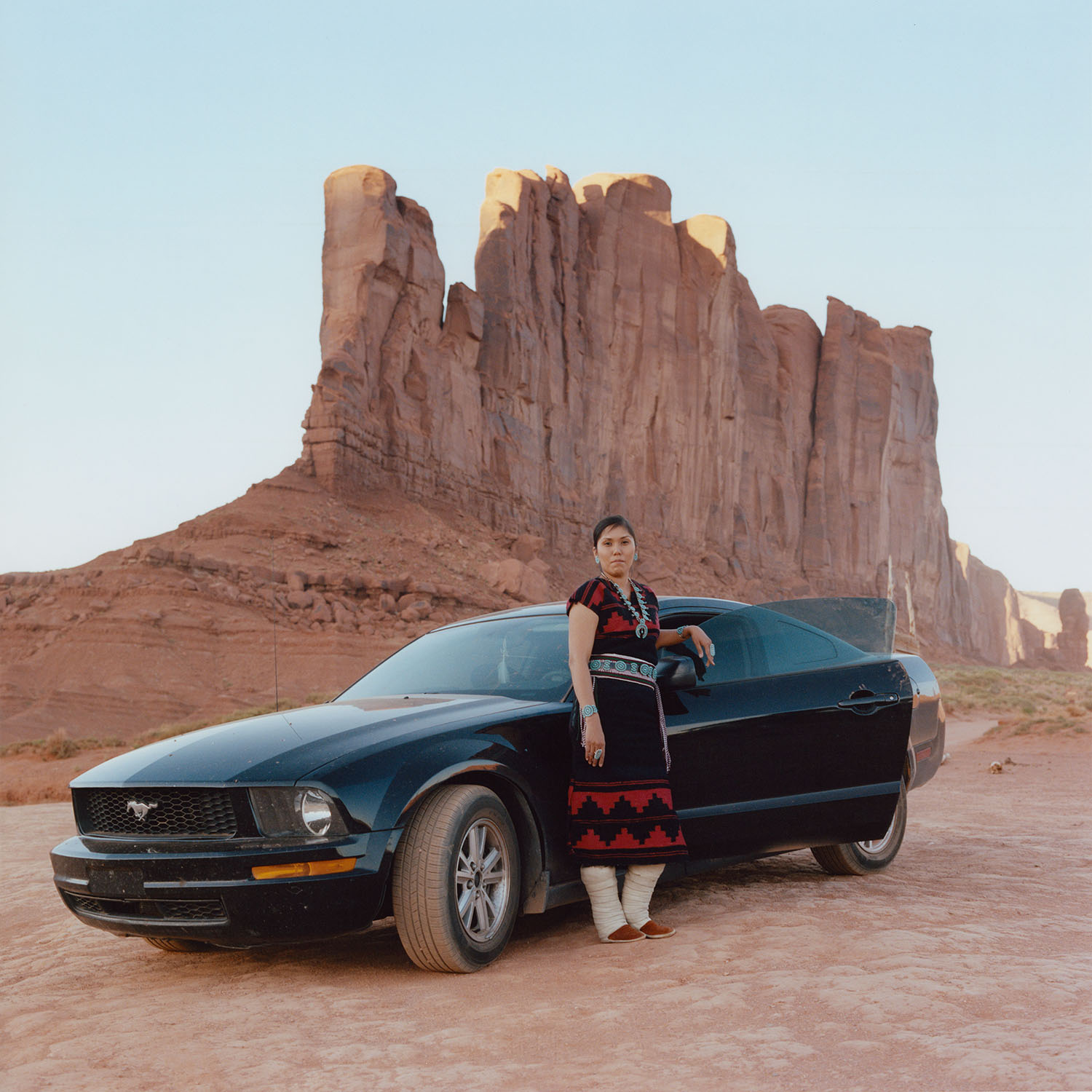
©The Red Road Project, Evereta Thinn, 30 (at the time of photograph), is photographed in Monument Valley with her Ford Mustang. The car was given to her as a gift by her brother, who passed away shortly afterwards, and became her most sentimental possession and a way of honoring her brother. This Diné (Navajo) woman works in the education system with hopes of one day opening up a cultural and language immersion school for her people.

©The Red Road Project, Jeremiah, Jeremiah Taliman, Diné, married a Mikmaq woman from Canada and now lives in Maine. He travels around North America attending pow wows and advocates for Native Americans and First Nations people.

©The Red Road Project, Tony Ward, Taliman, Diné, married a Mikmaq woman from Canada and now lives in Maine. He travels around North America attending pow wows and advocates for Native Americans and First Nations people.
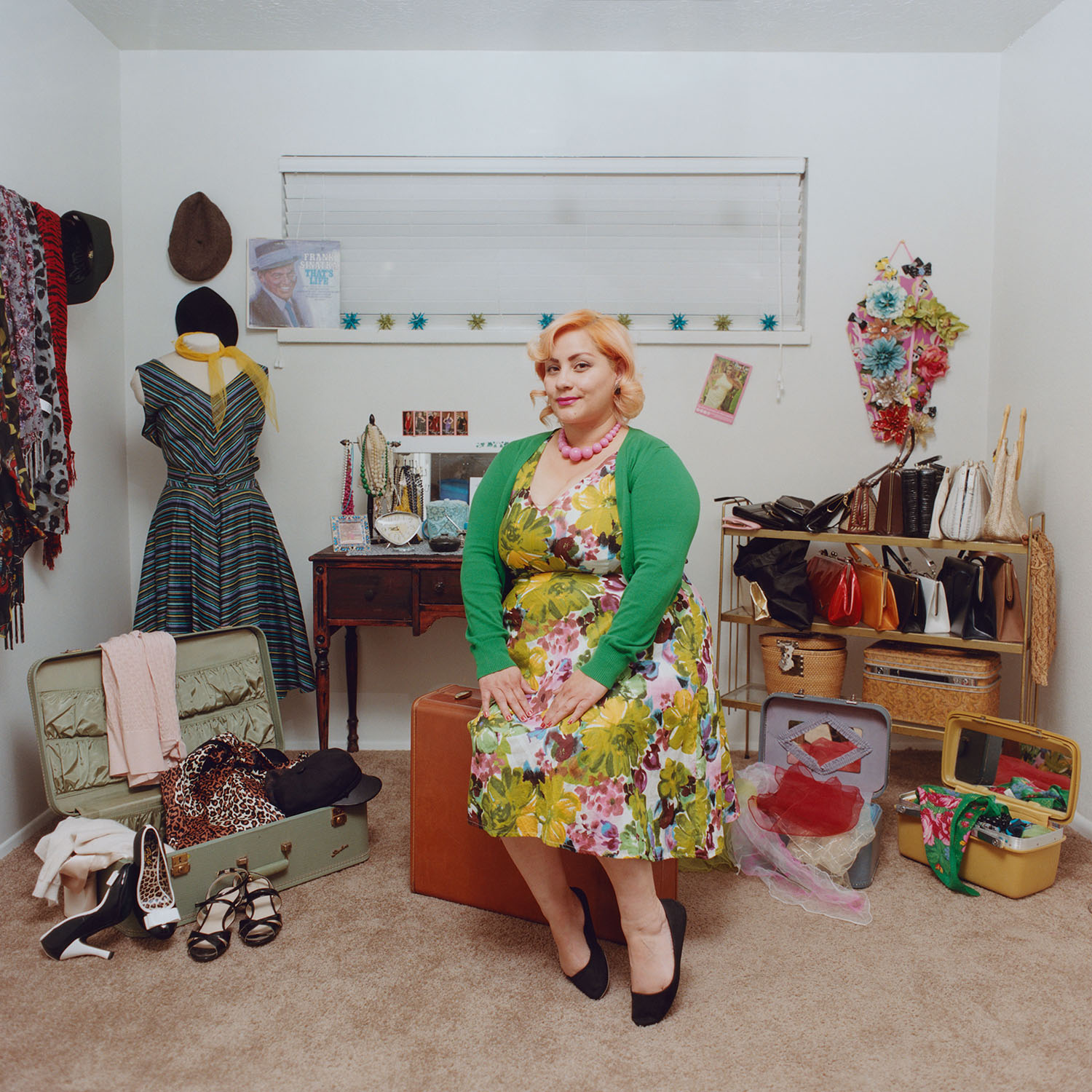
©The Red Road Project, Sophia Arviso, Diné, is part of the Blue-Bird pin-ups, a group of Native Gilrs that dress from the 40s-50s era and travel around Indian Country hosting events like “Pin me up”.
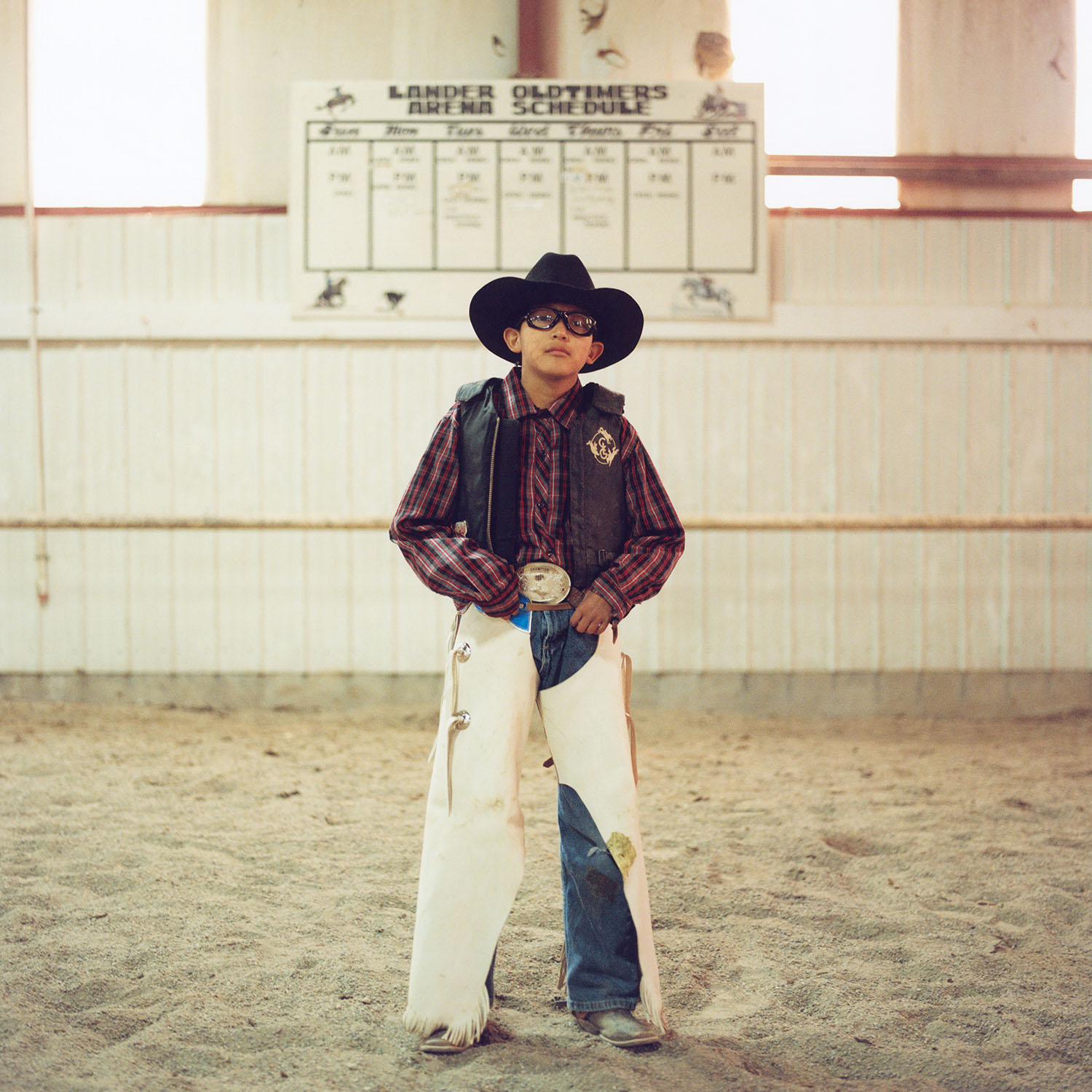
©The Red River Project, Jarrod is Eastern Shoshone and Arapaho, living on the Wind River Indian Reservation in Wyoming. He has been riding bulls since he was very young. We hung out with him after his rodeo performance and asked what he hopes for his future. He states, “I hope to become a World Champion one day so I can buy my mom a house.”
In addition to the collection of photographs, a selection of sculptural works by celebrated Native artists Danielle Boyer (Ojibwe), Gregg Deal (Pyramid Lake Paiute), Tyler Eash (Maidu), ChelseaKaiah (White Mountain Apache and White River Ute), Brent Learned (Cheyenne-Arapaho), Dallin Maybee (Seneca and Northern Arapaho), Danielle SeeWalker (Hunkpapa and Oglala Lakota), Carmen Selam (Yakama and Comanche), and Anna Tsouhlarakis (Navajo and Creek) will be on view.
Through this ongoing series, The Red Road Project aims to actively illustrate how Native American tribes and nations have overcome constant attempts of cultural genocide andacknowledge the residual scars of colonization, but more importantly, bring forth the impactful stories of resilience, resistance, and revitalization happening in those communities today.
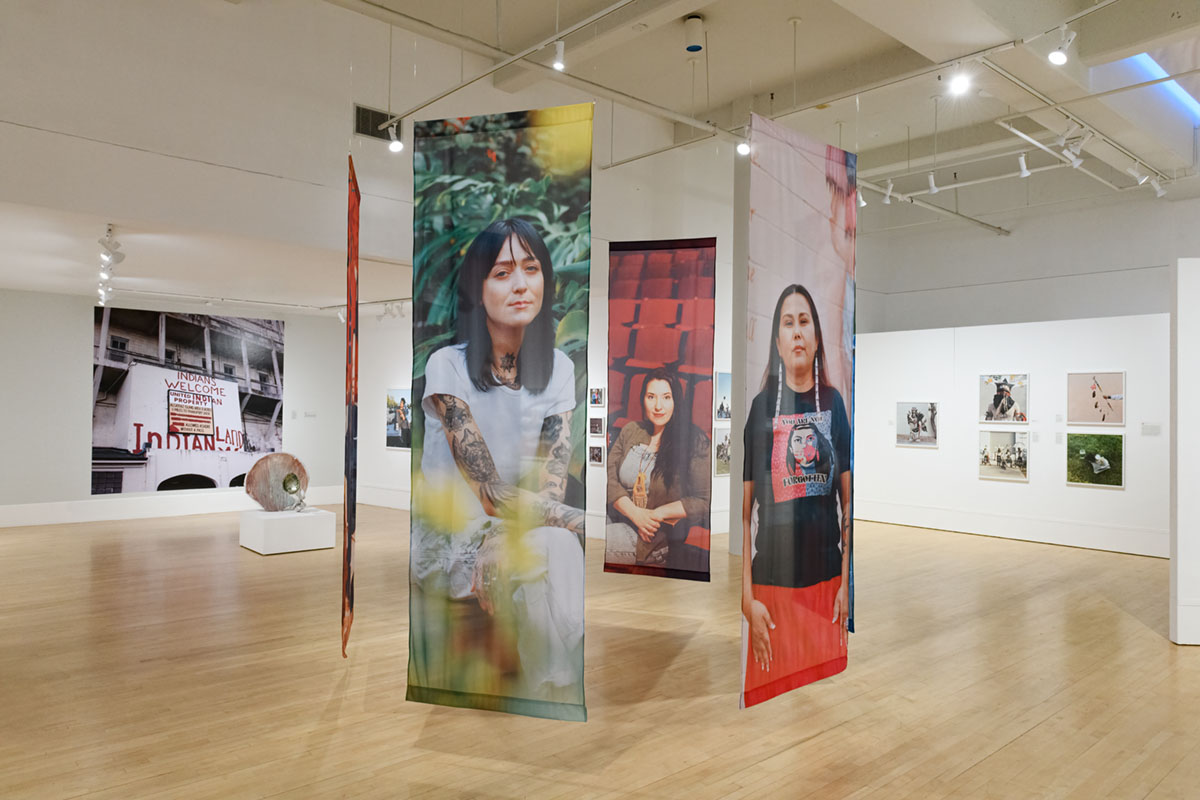
Photography by Shaun Roberts, Installation view from “Re-Discovering Native America: Stories in Motion with The Red Road Project” featuring work by Danielle Boyer, Tyler Eash, Chelsea Kaiah, Brent Learned, Dallin Mayee, Danielle SeeWalker, Carmen Selam, and Anna Tsoularakis. On view from April 13 through June 23, 2024 at Bedford Gallery, Walnut Creek, CA.

Photography by Shaun Roberts, Installation view from “Re-Discovering Native America: Stories in Motion with The Red Road Project” featuring work by Danielle Boyer, Tyler Eash, Chelsea Kaiah, Brent Learned, Dallin Mayee, Danielle SeeWalker, Carmen Selam, and Anna Tsoularakis. On view from April 13 through June 23, 2024 at Bedford Gallery, Walnut Creek, CA.
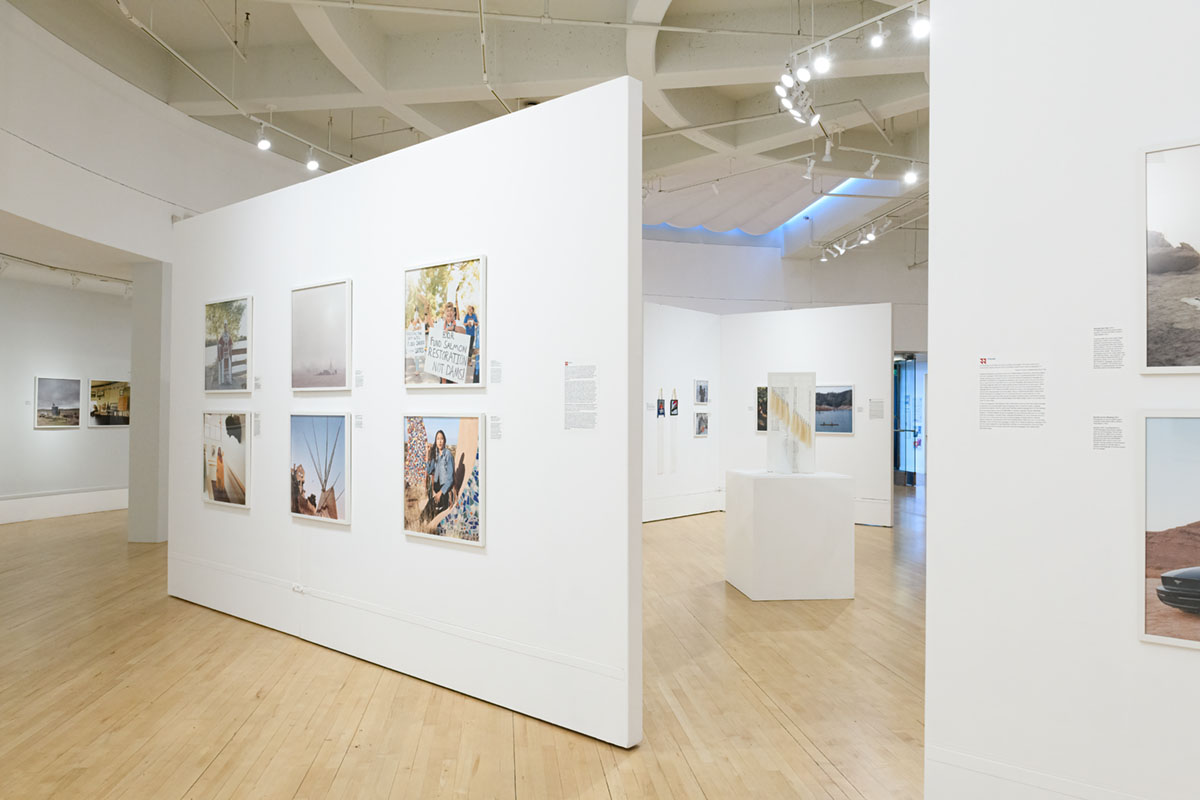
Photography by Shaun Roberts, Installation view from “Re-Discovering Native America: Stories in Motion with The Red Road Project” featuring work by Danielle Boyer, Tyler Eash, Chelsea Kaiah, Brent Learned, Dallin Mayee, Danielle SeeWalker, Carmen Selam, and Anna Tsoularakis. On view from April 13 through June 23, 2024 at Bedford Gallery, Walnut Creek, CA.
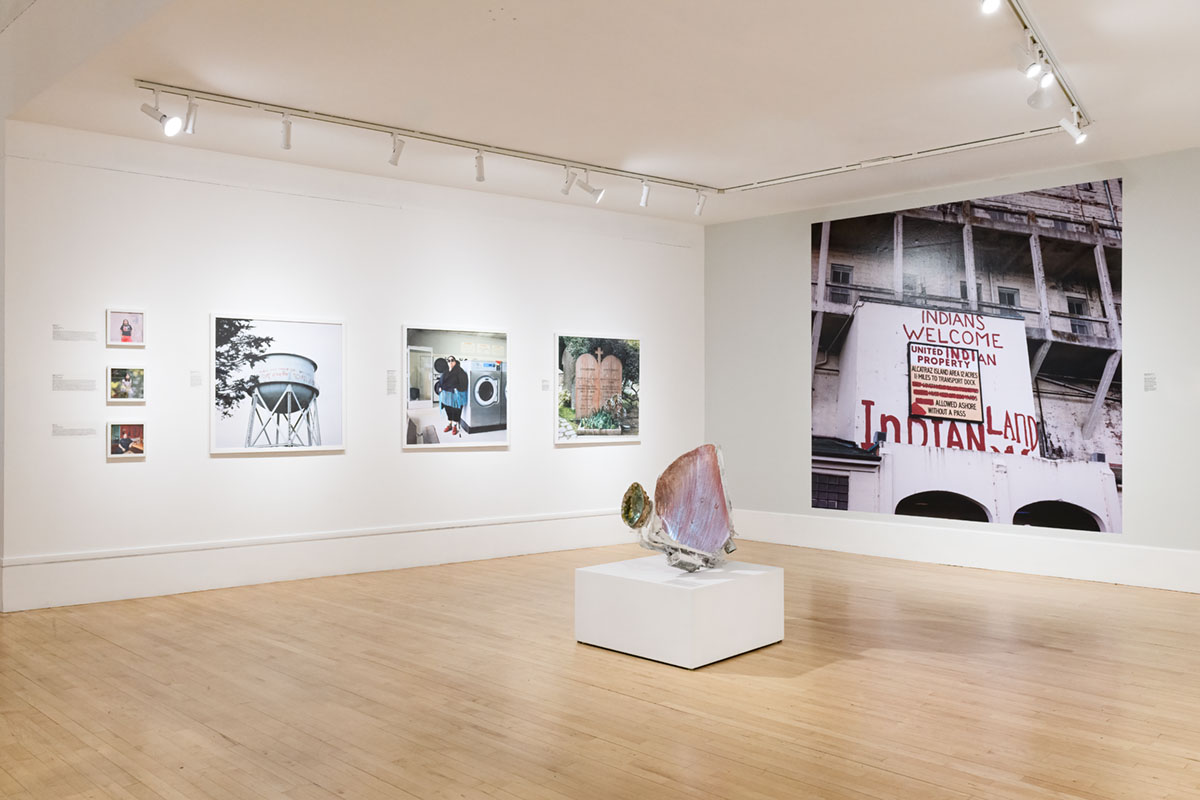
Photography by Shaun Roberts, Installation view from “Re-Discovering Native America: Stories in Motion with The Red Road Project” featuring work by Danielle Boyer, Tyler Eash, Chelsea Kaiah, Brent Learned, Dallin Mayee, Danielle SeeWalker, Carmen Selam, and Anna Tsoularakis. On view from April 13 through June 23, 2024 at Bedford Gallery, Walnut Creek, CA.
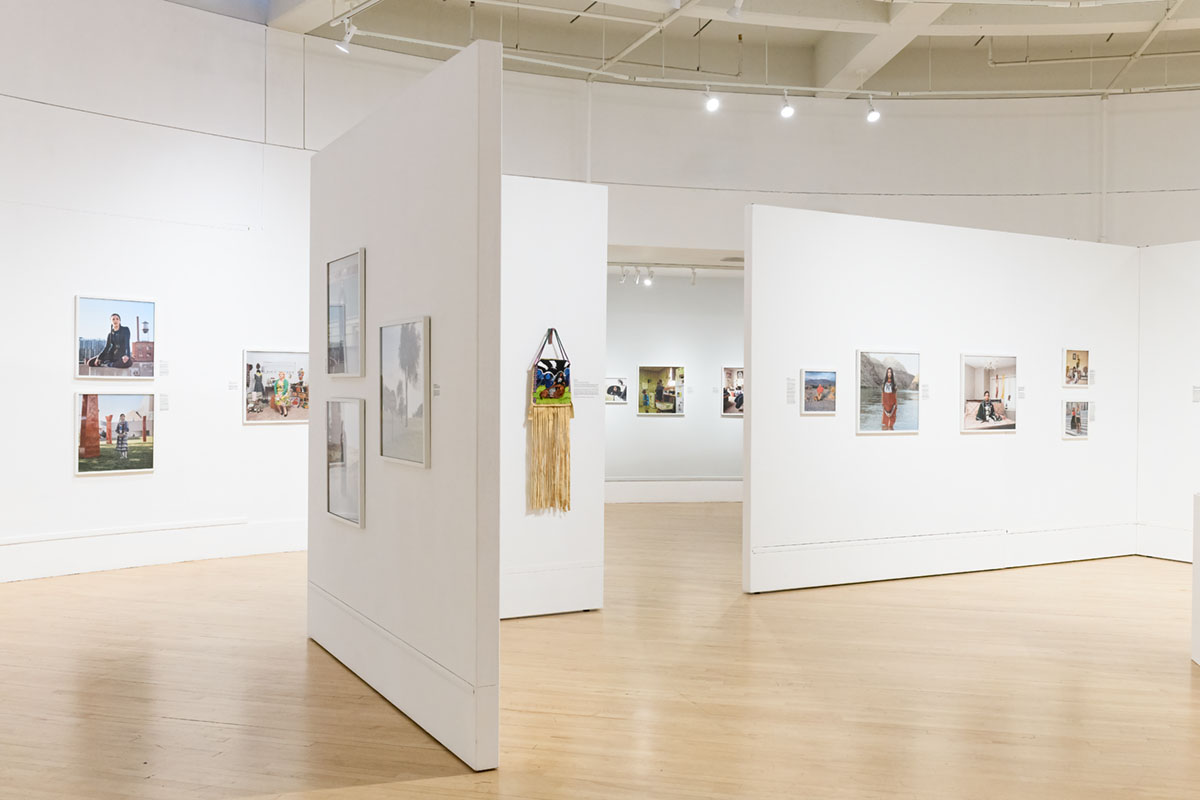
Installation view from “Re-Discovering Native America: Stories in Motion with The Red Road Project” featuring work by Danielle Boyer, Tyler Eash, Chelsea Kaiah, Brent Learned, Dallin Mayee, Danielle SeeWalker, Carmen Selam, and Anna Tsoularakis. On view from April 13 through June 23, 2024 at Bedford Gallery, Walnut Creek, CA. Photography by Shaun Roberts, Installation view from “Re-Discovering Native America: Stories in Motion with The Red Road Project” featuring work by Danielle Boyer, Tyler Eash, Chelsea Kaiah, Brent Learned, Dallin Mayee, Danielle SeeWalker, Carmen Selam, and Anna Tsoularakis. On view from April 13 through June 23, 2024 at Bedford Gallery, Walnut Creek, CA.
Danielle SeeWalker is Húŋkpapȟa Lakȟóta and citizen of the Standing Rock Sioux Tribe in North Dakota. She is a fine artist, muralist, writer, activist, and boymom of two, based in Denver, Colorado. Her visual artwork often incorporates the use of mixed media and experimentation while incorporating traditional Native American materials, scenes, and messaging. Her artwork pays homage to her identity as a Lakȟóta wíŋyaŋ (woman) and her passion to redirect the narrative to an accurate and insightful representation of contemporary Native America while still acknowledging historical events.
Alongside her passion for creating visual art, Danielle is a freelance writer and published her first book in 2020 titled, “Still Here: A Past to Present Insight of Native American People & Culture.” She is also very dedicated to staying connected and involved in her Native community and has served as a mayoral appointed City Commissioner for the Denver American Indian Commission since 2019. Danielle has also been working on a personal, passion project since 2013 with her long-time friend called The Red Road Project. The focus of the work is to document, through words and photographs, what it means to be Native American in the 21st century by capturing inspiring and positive stories of people and communities within Indian Country. Denver Mayor’s for Excellence in Arts & Culture 2022 Arts & Culture Innovation Awardee Emmy Award Recipient in 2023 for Illustration work done on a PBS documentary.
Follow Danielle on Instagram: @seewalker_ART
Carlotta Cardana is an Italian editorial and commercial photographer based in London. In her personal practice, she looks at how communities are affected by economic upheaval and oppression, indigenous spirituality, the relationship between humans and their environment and at how one’s identity is shaped by the society and space he/she inhabits, such as among minorities or subcultures.
Carlotta’s work has been awarded and exhibited in numerous international galleries and festivals and is included in the collection of the National Portrait Gallery and the Parliamentary Art Collection.
Clients include: The Wall Street Journal, T: The New York Times Style Magazine, Bloomberg, AFAR, De Volkskrant, L’OBS, The Telegraph Magazine, Financial Times, British Journal of Photography, D Repubblica.
Follow Carlotta on Instagram: @carlottacardana
Follow The Red Road Project on Instagram: @theredroadproject
About Bedford Gallery
Bedford Gallery (BG), a program of the City of Walnut Creek, shows the work of modern andcontemporary artists. The gallery is dedicated to providing the public with opportunities to learn about visual arts through public programs that are varied, accessible, challenging, and educational. Its mission is to provide exhibitions and other programs that both reflect and engage the diverse audiences of the entire Contra Costa County region. With 3,500 square feeof exhibition space, Bedford Gallery is the largest municipally operated visual arts facility between the San Francisco Bay Area and Sacramento
Follow Bedford Gallery on Instagram: @bedfordgallery
About Lesher Center for the Arts
Lesher Center for the Arts is the premier arts venue in Central Contra Costa County. Located in the heart of downtown Walnut Creek, the center offers three separate theatres and Bedford Gallery, a visual arts gallery, presenting the best of theater, ballet, comedy, and visual art.
Follow Lesher Center for the Arts on Instagram: @leshercenter/
Posts on Lenscratch may not be reproduced without the permission of the Lenscratch staff and the photographer.
Recommended
-
Lisa McCord: Rotan SwitchMay 18th, 2024
-
Re-Discovering Native America: Stories in Motion with The Red Road ProjectMay 5th, 2024
-
Earth Week: Simon Norfolk: When I am Laid in EarthApril 27th, 2024
-
Shinichiro Nagasawa: The Bonin IslandersApril 2nd, 2024
-
The International Women in Photo Association Awards: Lorraine Turci: The Resilience of the CrowMarch 16th, 2024


